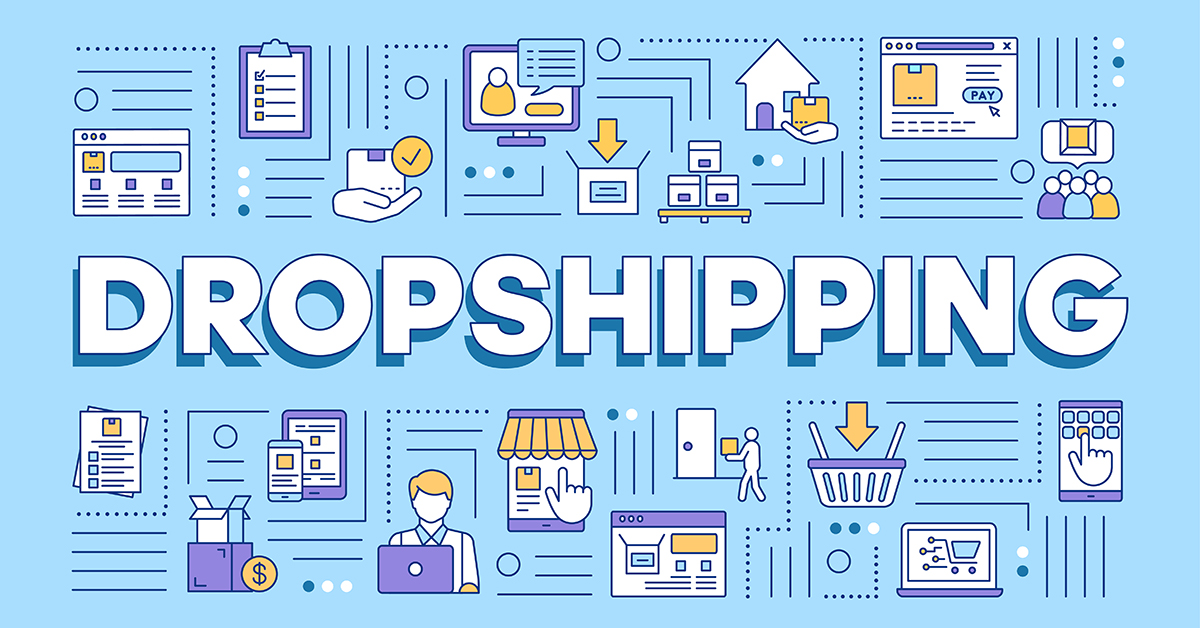Dropshipping: The Ultimate Guide to Building a Successful Online Business
Dropshipping is a popular business model that allows entrepreneurs to sell products online without holding any inventory. This makes it a great option for people who are just starting out in e-commerce, as it requires less upfront investment than traditional retail businesses.
Introduction to Dropshipping
Dropshipping is a retail fulfillment method where a store doesn’t keep the products it sells in stock. Instead, when a store sells a product, it purchases the item from a third party and has it shipped directly to the customer. As a result, the seller doesn’t have to handle the product directly. This model drastically reduces the overhead and risk of starting an e-commerce business, making it an attractive option for budding entrepreneurs.
How Dropshipping Works
In dropshipping, the seller sets up an online store and chooses products from a supplier, often from platforms like AliExpress, Oberlo, or SaleHoo. When a customer places an order, the seller purchases the product from the supplier, who then ships it directly to the customer. The seller’s profit is the difference between the supplier’s price and the price they sell the product for.
Advantages of Dropshipping
- Low Start-Up Costs: Dropshipping eliminates the need for inventory management and purchase, significantly reducing initial investment.
- Flexibility: It allows for easy scalability and flexibility in product offerings without additional costs.
- Wide Product Selection: Sellers can offer a broad range of products without buying inventory upfront.
- Convenience: It removes the hassle of handling physical products, packaging, and shipping.
- Remote Work: This model enables entrepreneurs to run their business from anywhere in the world.
Challenges in Dropshipping
- Low Margins: High competition can lead to lower profit margins, especially in popular niches.
- Inventory Issues: Since stock isn’t maintained, there can be issues with inventory tracking.
- Supplier Reliability: Dependence on third-party suppliers means any issues on their end (like stock shortages or shipping delays) directly impact your business.
- Limited Customization: Customizing products or packaging is usually not an option, which can limit branding opportunities.
- Customer Service Challenges: Dealing with returns and customer complaints can be more challenging as the seller doesn’t handle the products directly.
Selecting the Right Niche
Choosing the right niche is crucial in dropshipping. It should ideally be a niche you are passionate about and has a good demand. Conduct thorough market research, analyze trends, and consider the competition before settling on a niche.
Finding Reliable Suppliers
Building a successful dropshipping business heavily relies on finding reliable suppliers. Platforms like Alibaba, AliExpress, and others can be used to find suppliers. Look for suppliers with high ratings, good communication, and reliable shipping times. Establishing a good relationship with suppliers is crucial.
Setting Up an Online Store
Most dropshippers use platforms like Shopify, WooCommerce, or BigCommerce to set up their online stores. These platforms are user-friendly and offer various tools for sales, marketing, and analytics. The design and usability of your website play a significant role in attracting and retaining customers.
Marketing Your Dropshipping Business
Effective marketing strategies are crucial for the success of a dropshipping business. This can include:
- Search Engine Optimization (SEO): Optimizing your website to rank higher in search engine results.
- Social Media Marketing: Leveraging platforms like Facebook, Instagram, and Pinterest to engage with your audience.
- Email Marketing: Building an email list to promote products and offer exclusive deals.
- Content Marketing: Creating valuable content to attract and engage your target audience.
- Paid Advertising: Using platforms like Google Ads or Facebook Ads for targeted advertising.
Managing Finances
Understanding and managing your finances are crucial for a sustainable business. This includes monitoring your cash flow, setting appropriate prices, keeping track of expenses, and understanding your tax obligations.
Customer Service
Excellent customer service can set your dropshipping business apart. This includes timely responses to customer inquiries, handling returns and refunds professionally, and ensuring customer satisfaction.
Scaling Your Business
Once your dropshipping business is established, consider scaling. This can involve adding new products, exploring new niches, or expanding into new markets. It’s also important to continually optimize your operations and marketing strategies based on analytics and customer feedback.
Staying Ahead of the Curve
The e-commerce industry is rapidly evolving. Staying informed about the latest trends, technologies, and market shifts is crucial. This includes understanding changes in consumer behavior, advancements in e-commerce technology, and emerging marketing strategies.
Conclusion
Dropshipping offers a unique opportunity for entrepreneurs to start their own e-commerce business with minimal investment. However, it requires careful planning, strategic marketing, and excellent customer service. By understanding the challenges and focusing on the best practices outlined in this guide, entrepreneurs can build a successful dropshipping business that stands the test of time.














Post Comment